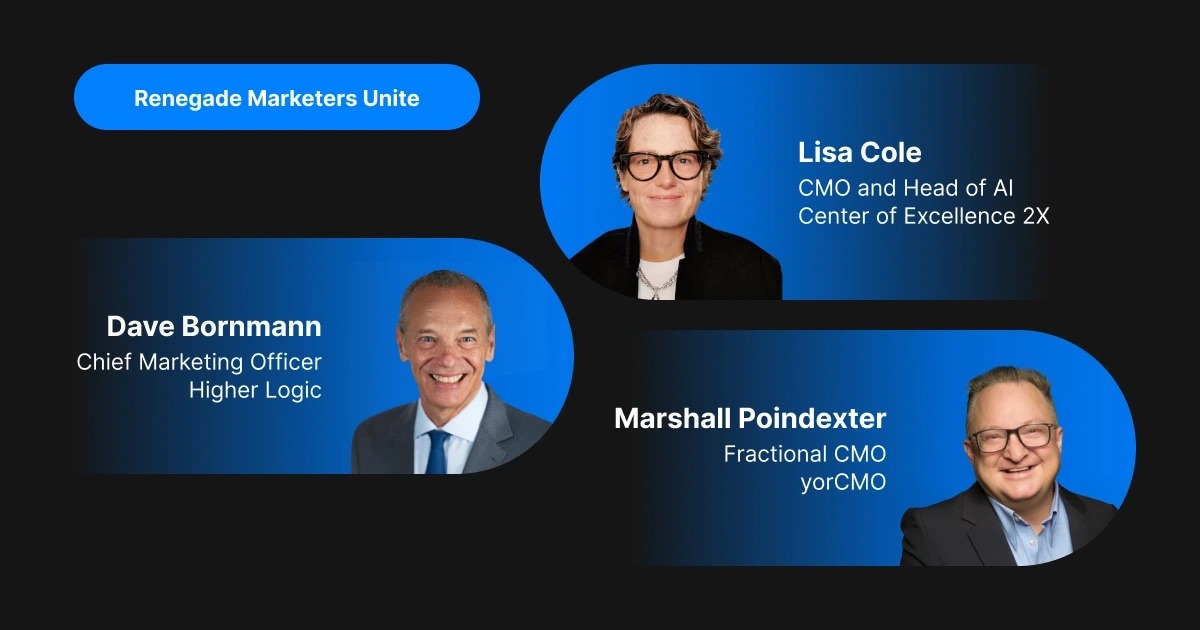September 29, 2023 | Blog
3 reasons your MarTech stack is fragmented—and what to do about it

MarTech utilization has hit an all-time low this year with marketing departments using only 33% of their current capabilities (down from 42% in 2022 and 58% in 2020), according to a Gartner study1.
And it’s a huge drain on their budgets. The same study estimated that MarTech underutilization could cost companies with a revenue size of $250 million up to $4 million2 —an extravagance resource-strapped marketing teams cannot afford.
But why is it so hard for marketing departments to leverage the full power of their MarTech stacks—and what can they do about it?
1. Poor MarTech integration
The explosion of the MarTech landscape in the past decade—starting from just around 150 MarTech tools in 2011 to nearly 10,000 in 20223 —has fueled a spending spree among marketers, with the average marketing team employing 20 to 29 MarTech tools today4.
But with every new tool that gets added to the MarTech stack, achieving full integration is that much more complex. For instance, an organization with over 20 MarTech tools could be looking at upwards of 200 integrations.
Faced with such a complex MarTech ecosystem, many marketers give up on their integration initiatives altogether. So much so, only 23% of B2B marketers say they have fully integrated data that flows between systems without manual input5.
A fragmented MarTech stack ultimately means marketers don’t get a full picture of their customer’s journey, hampering the effectiveness of their marketing campaigns over time. And should marketing efforts yield any success, without integrated systems, reporting and attributing any revenue generated back to marketing would be difficult.
In fact, 55% of US marketers believe that a poorly integrated MarTech environment has resulted in loss of revenue for their business6.
2. Lack of expertise, time, and capacity
Achieving seamless integration across the MarTech stack requires MOps talent with a deep understanding of a variety of MarTech tools. Unfortunately, MOps professionals are in short supply.
According to a report by MarTech Alliance7, 57% of marketers say they find it challenging when recruiting for talent to work in MarTech or marketing operations, saying that “the market is lacking marketers with the necessary MarTech, data or marketing ops skills and knowledge.”
Besides the right expertise, MarTech management also requires dedicated time and focus. Take for example the process of adopting a new piece of MarTech. Besides setup and tool exploration, a robust change management plan, where relevant team members are identified, onboarded, and equipped with the necessary skills, is crucial to boost user adoption—which can take months.
It doesn’t stop there. Post-integration, your MarTech investments require continuous testing and upkeep to ensure they’re properly integrated with the rest of the stack at all times. But as marketing budgets continue to shrink and B2B marketers have to juggle both core, strategy work and non-core execution tasks like MarTech management, many resort to half-hearted attempts at adoption.
Beyond MOps talent, buying more MarTech often necessitates buying other types of talent such as writers, designers, campaign managers and data analysts. For instance, AI-powered conversational marketing platform Drift not only requires the expertise of a MOps professional to build and deploy a chatbot to your website but a writer with the ability to serve website visitors the right content at the right time to accelerate conversion.
3. MOps talent is expensive
The war for MOps talent is on—and it’s driving up hiring costs.
According to Forrester8, hiring and retaining five in-house marketers dedicated to running Adobe Marketo Engage alone costs around $880,000 a year. And with an average of 20 tools in any given MarTech stack, the cost quickly adds up.
The workaround for some B2B companies may be hiring junior-level MOps professionals instead, but many don’t realize the additional investment required to get them up to speed. A 2022 study found that companies shelled out around $36,720 over the first seven months to train a new junior-level MarOps hire9.
Additionally, some 70% said they devoted five hours or more each week for at least six months to training their new hire. All that time, effort, and resources spent may not be even worth it, with as many as 72% leaving their company in less than three years.
And with new trends and technologies introduced to the industry every day, a piece of MarTech can be easily added or removed from the stack, making resourcing efforts difficult and unpredictable.

Unifying a Fragmented MarTech Stack Is Easier with Marketing as a Service (MaaS)
Achieving full stack integration is time-, cost-, and labor-intensive, but there’s a better way to go about it: marketing as a service (MaaS).
MaaS brings the concept of managed services—which has been used by a host of functions including IT, HR, Finance, and Accounting for years—to marketing, where non-core execution and operational tasks such as MarTech integration and management are outsourced to extend the capacity of your workforce, while internal staff focus on the core strategic work that you need to be the best in the world at.
Clients are equipped with a diverse group of creative, campaign, advertising, ABM, analytics, and of course, MOps and technology management resources to unify and leverage the full power of their MarTech stack—among other service offerings—to create true marketing impact.
Gartner’s recent “Recession Playbook for Marketing Leaders” called out the need to “fundamentally rethink” the marketing organization’s operating model, particularly around how an enterprise leverages talent and labor, whether in-house, outsourced, part time, or full time.
The MaaS model provides an access lane to a readily available, fully-trained and certified workforce of marketing technologists to bring:
Increased impact: Being able to split core, strategic work from non-core execution tasks will improve the quality of programs and their outcomes—more engagement, more activation, more pipeline, more revenue, and better marketing ROI. Moreover, specialized focus with a dedicated team to deliver on the variety of dimensions within one campaign will elevate marketing maturity and extract every ounce of potential from your MarTech stack.
Best-practice processes: Standardization drives efficiency and scale, so having a dedicated vendor team contracted to support a process—especially when the provider is in the business of providing services around it—will yield higher effectiveness. In addition, knowing productivity metrics, unit-cost economics, and utilization and capacity levels provides the foundation for predictable scale.
Stability: Having a degree of flexibility if your MarTech stack changes ensures brand and operational stability. The dynamic market requires the ability to scale up and down, as well as the expertise to navigate the skill changes of new technology, which is hard to do with large teams of internal FTEs.
Focus: By outsourcing execution-oriented, high-volume tasks from your senior staff in established marketing teams, your marketers can focus on being marketers again. It could even provide a path to management for high-potential employees by allowing them to manage a vendor and learn other new skills to advance in the organization.
What Partnering with 2X Looks Like: Key Takeaways
Maximize ROI on Your MarTech Investments with 2X Today
Powered by our Revenue Marketing Resource Center (MRC)—comprising nearly 1,000 strong team marketers based in our delivery centers in KL & Manila—2X has spent years helping marketing organizations run, integrate, and optimize their MarTech stacks to deliver marketing impact and ultimately, drive business outcomes.
And with the help of our 2X COE Lab—a proprietary incubator that constantly stress-tests the latest tools and solutions, developing benchmarks and best practices—2X has secured official MarTech partnerships with 6sense (Tier 1 Service Partner), Adobe Marketo Engage, Pardot, HubSpot, Drift, WP Engine, and more.
Interested to learn more? Discover our MOps capabilities or contact us today for a free consultation.
1 ‘Gartner Survey Finds 63% of Marketing Leaders Plan to Invest in Generative AI in the Next 24 Months’, Gartner, August 23, 2023
2 Torres, Jennifer, ‘Martech Stack Underutilization Is a Big Problem’, CMSWire
3 Brinkler, Scott, ‘Marketing Technology Landscape 2022’, chiefmartec, May, 2022
4 Brinkler, Scott, ‘Wait, more martech tools create more manual tasks?!’, chiefmartec, 2021
5 Kashyap, Karthik, ‘Comprehensive Data Strategy and Integrated Martech Stack Pay Big Dividends’, Spice Works, September 29, 2022
6 ‘Independent Study Reveals Almost Half of Marketers Do Not Trust the Reliability of Their Data Due to Fragmented Tools and Poor Integration’, Zeta Global, July 11, 2023
7 ‘Skills Gaps Continue to Plague MarTech Capabilities’, Marketing Charts, December 13, 2021
8 ‘The Total Economic Impact™ Of Marketo Engage’, Forrester, July 2020
9 Davis, Kim, ‘Marketing Operations Talent Is Suffering Burnout and Turnover’, MarTech.org, Last Modified May 20, 2022



